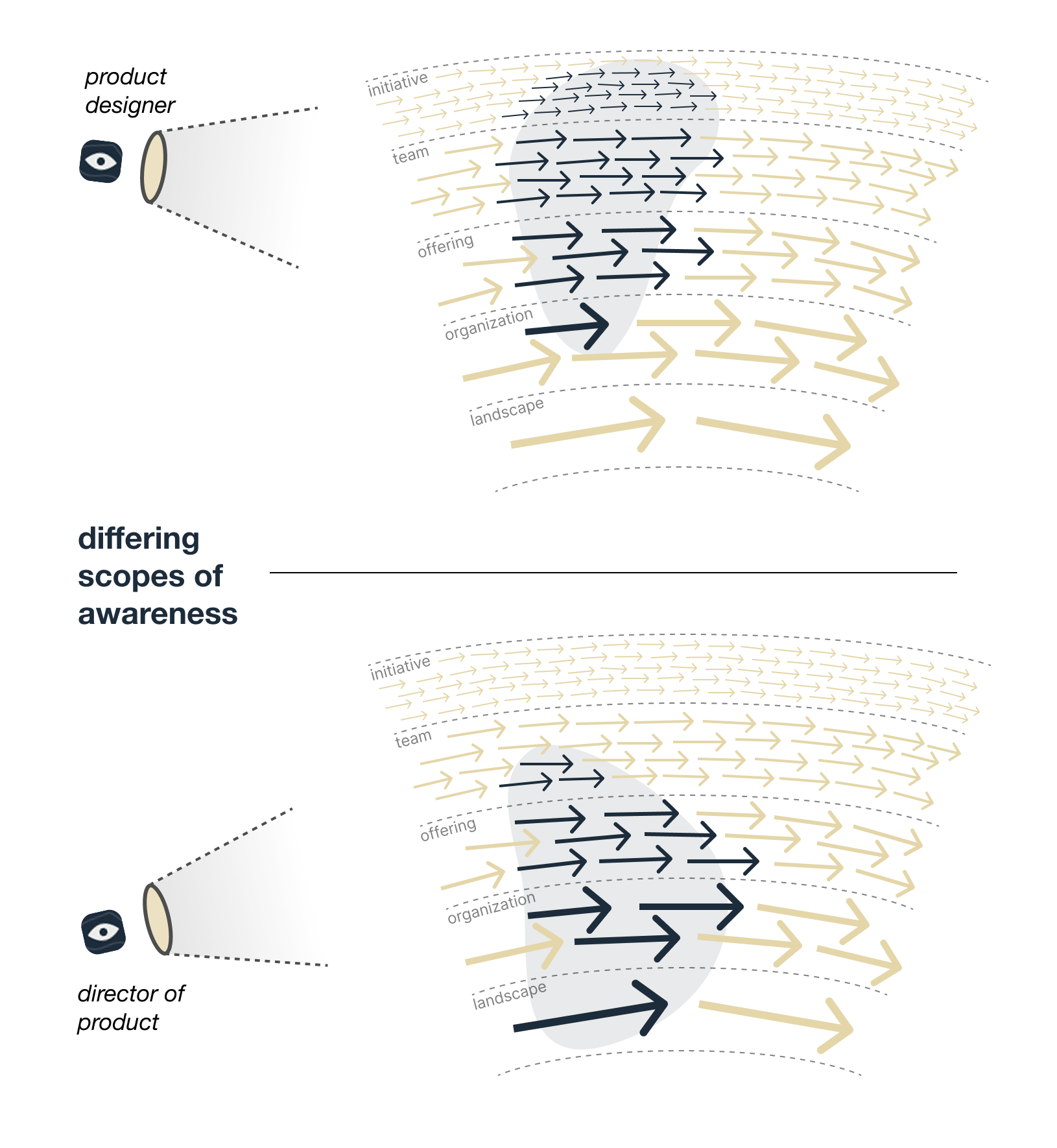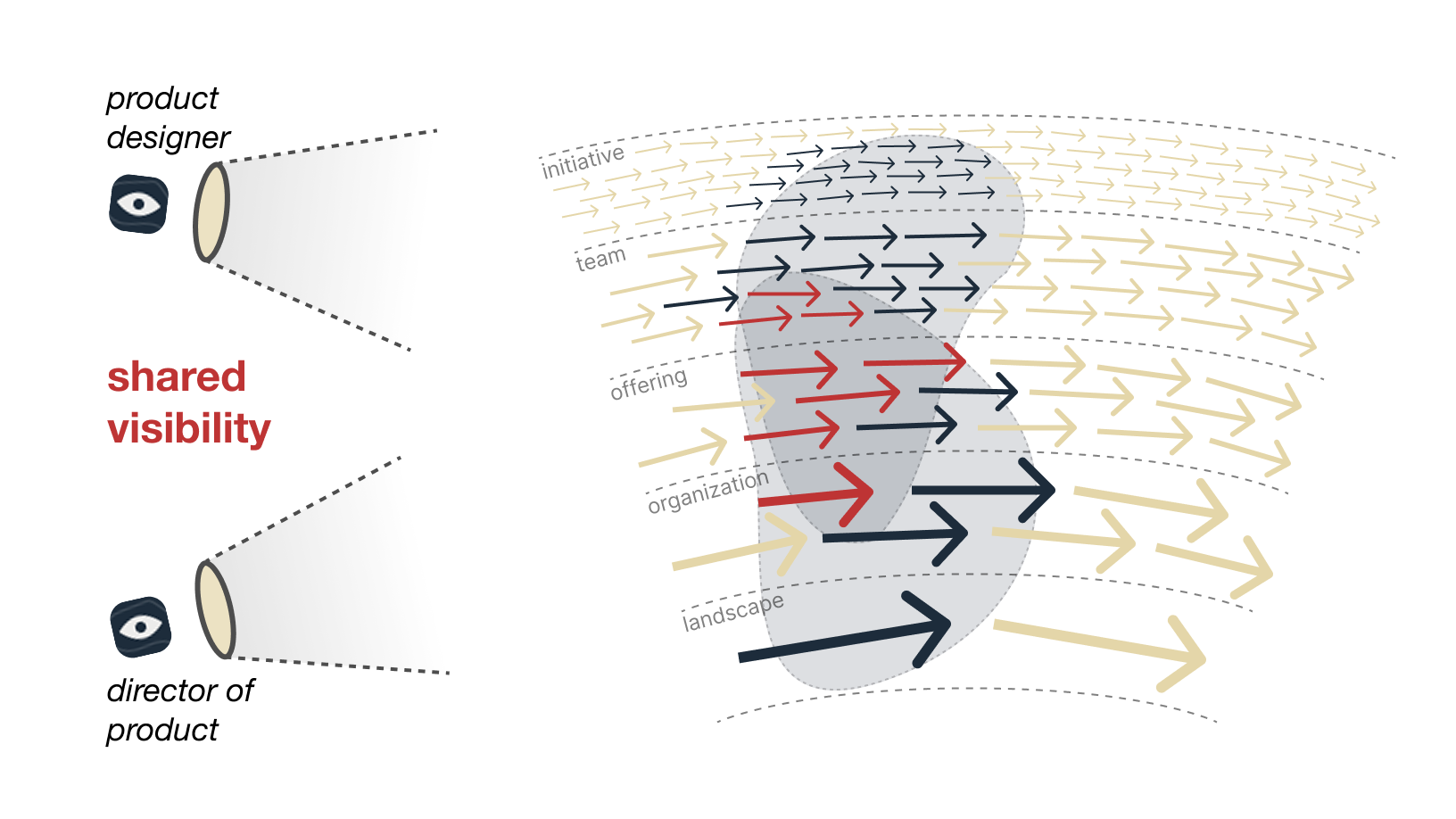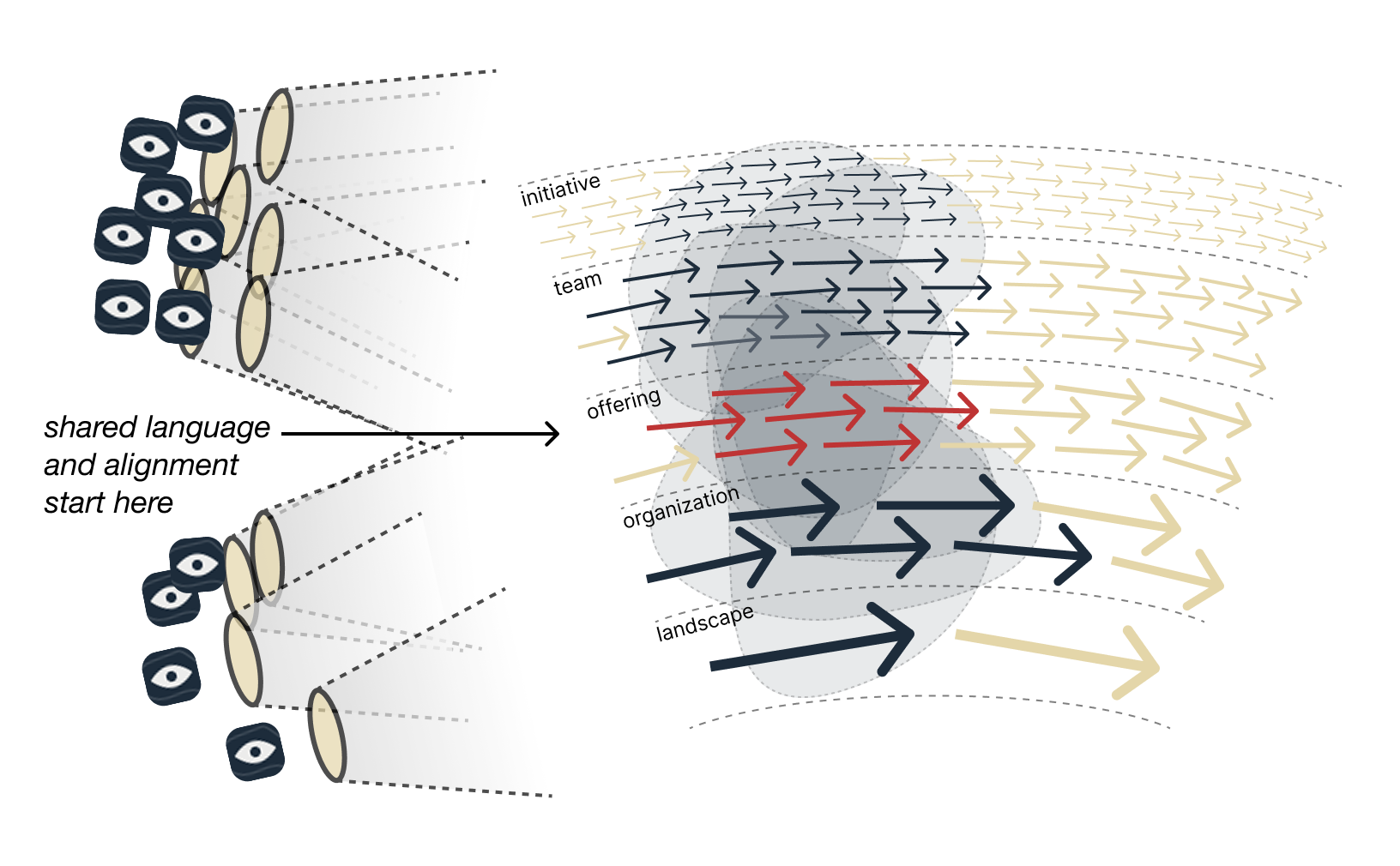The larger the organization, the less of the overall situation we can see and attune to. There is always more happening all the time, up and down the levels of scale. As we attempt to step aside and map some of the system, we change some parts of it with that very act, while others continue to change, unobserved.
Our individual view of work and how we understand it changes over time. It depends on experience, our position in the organization, and the skills and perspective we've spent years developing.
As our seniority grows, we shift to lower and slower levels of scale and spend our time with heavier actions, looking at longer time horizons. We build on our visual from Scope of Awareness and Control [LC22] to show two different perspectives below.

Scope of responsibility increases with seniority, but our awareness of the wide range of activities we are responsible for decreases. We lose a feeling for the texture of the faster levels, both the challenges they face and the kinds of insight they spin off at high frequency. (It then becomes possible to fall into Roger Martin’s strategy-vs.-execution trap: to imagine that our plans at the offering and organizational level are good, it's merely execution that's the problem.)
If we peel apart organizational activity into levels of scale, the possibility of a broadly shared reality exists at the offering level. We all need to know what our product or service does and doesn’t do, what people actually need from it, and how it performs.

Those of us working on faster levels of scale have a fine-grained understanding of how the offering is built and adapted: we are much more likely to sense and work with real-world interaction between an offering and its users. Those of us working on slower levels will have a coarse-grained and less-direct, more-mediated (in terms of performance metrics, dashboards, or comparison-to-model) understanding of the offering: we are more likely to sense and work with sources of demand and the trends that govern it. The offering level is where those two kinds of sight overlap.
In Brand's pace layering, one function of slower layers is to stabilize the innovations of the faster layers. From an organizational perspective, slower levels of scale constrain, for better or worse, those innovations to a certain direction. It's crucial they can sense and give life to the new possibilities that emerge, have a means to receive and respond to signals from the faster levels of scale. What makes that possible is common ground: understanding and shared language around the offering level and its reality.

The products or services that emerge at the offering level of scale are the organization’s main means of interaction with its environment. A few simple questions help point us to the place where most people’s scope of awareness will overlap:
- what is on offer to the world right now?
- how is it organized and what does it enable?
- who do we believe it’s meant for?
- what are they actually doing right now?
- where do we believe it’s moving toward?
- what work is actually underway to maintain, modify, or adapt it?
Working across many organizations, in-house and consulting, a diversity of answers here is no longer surprising: it's an expected default. Continual and collective asking and answering build shared language and understanding of our situation. That kind of alignment is — or should be — a core aim for our ritual loops and cycles at both the team and organizational level of scale.
Other things of note
- In his article on pace layers, Stewart Brand quotes Freeman J. Dyson. You may also know of Dyson's work from the eponymous Dyson Sphere, a theoretical construct that absorbs all of a star's energy (as featured in the 130th episode of Star Trek: The Next Generation, Relics). My uncle, an archivist at the American Philosophical Society, has spent the last few years organizing all of Freeman Dyson's correspondence. There was a lot of it. One item in the collection is a letter from Stewart Brand.
- Last week in Barcelona I attended a workshop on Estuarine Mapping from the Cynefin Co. It’s a framework for managing complex adaptive systems by mapping affordances — finding the handles we can currently grab onto in the ever-shifting substrate — and moving forward with a portfolio of directional systemic adjustments. It’s well-developed and the workshop was excellent. I’m looking forward to using it when the situation calls for it. I'm already considering how it resonates with Wardley Mapping as well as Alexander’s ideas of complexity in living systems and adaptive unfolding.


![Common Language of Offering [LC24]](/content/images/size/w100/2025/05/shared-visibility-offering-1.png)
